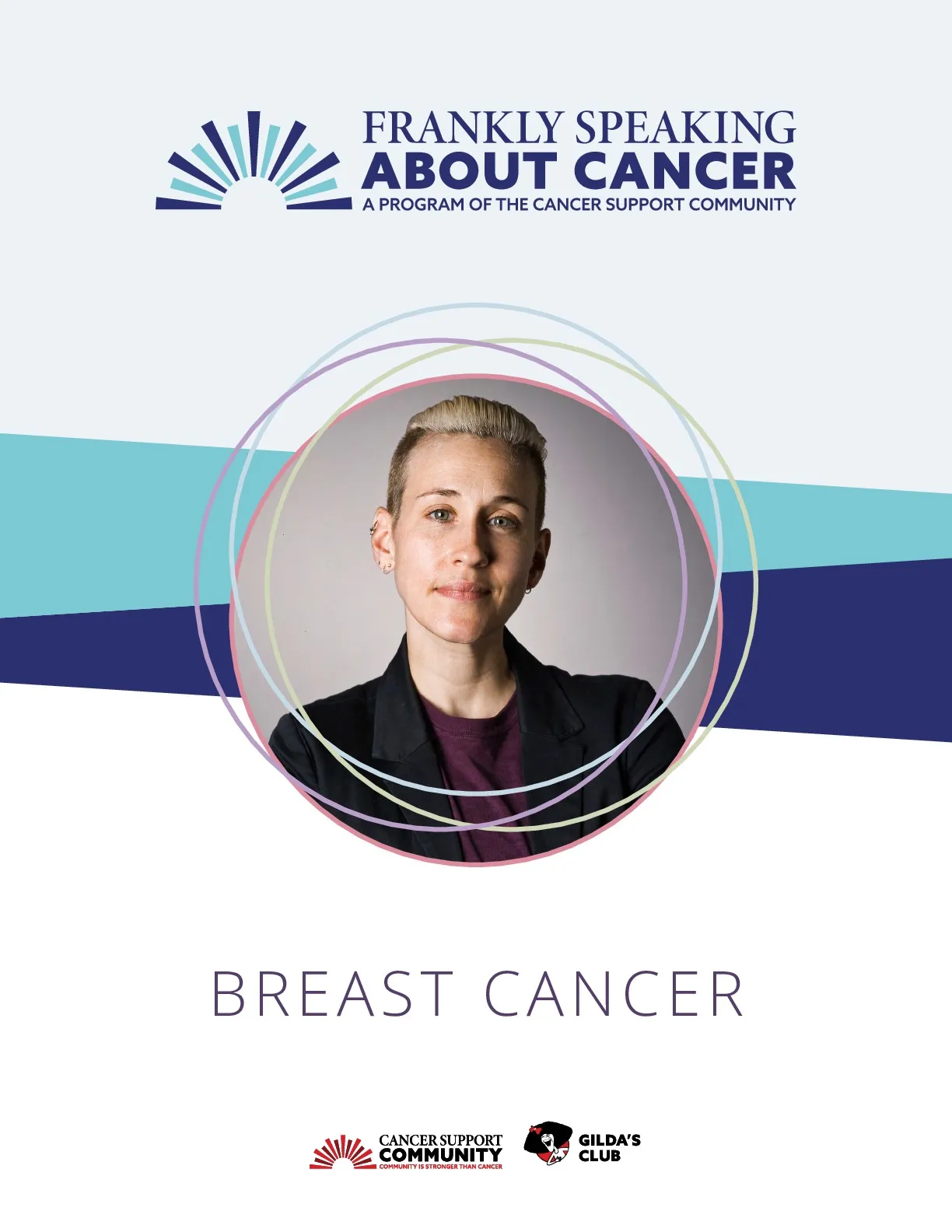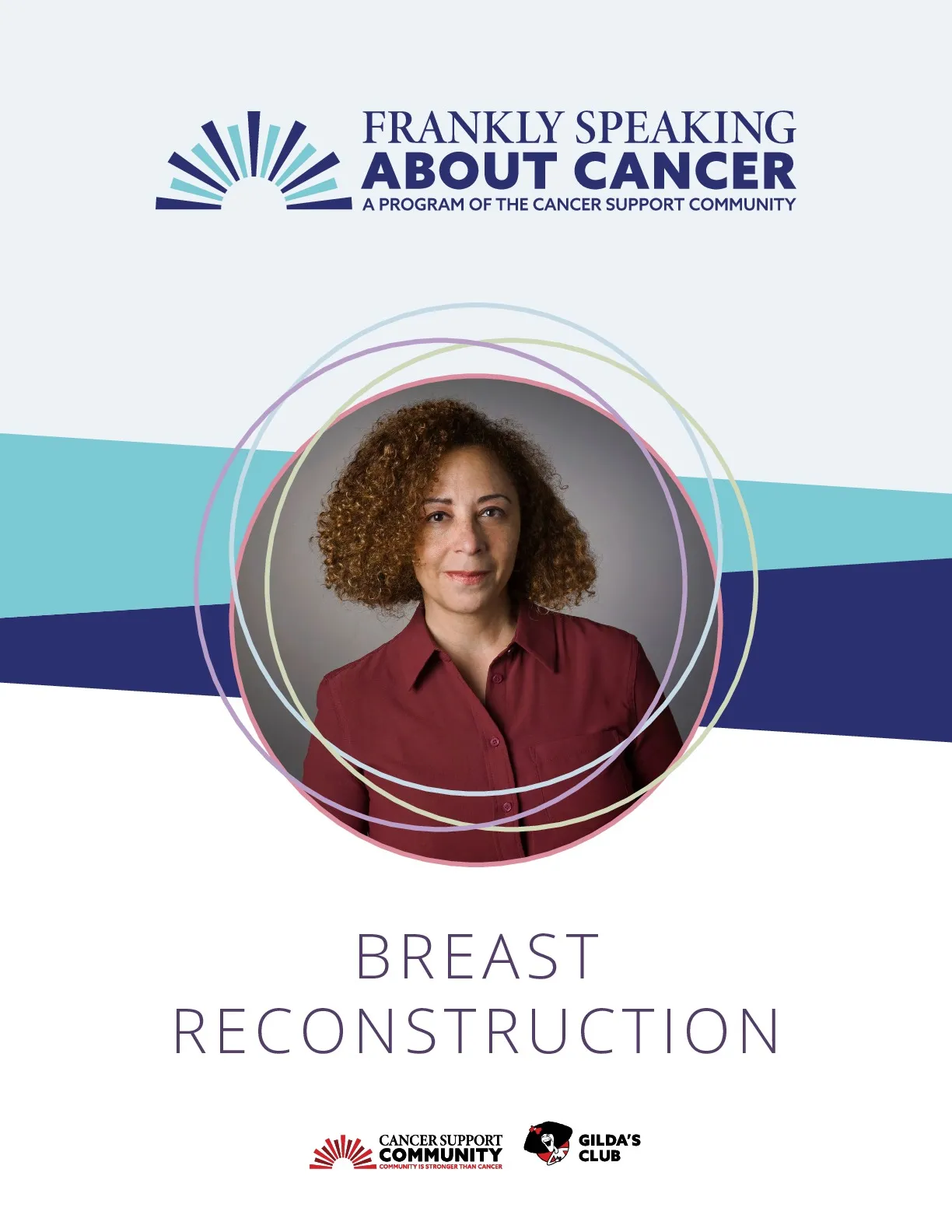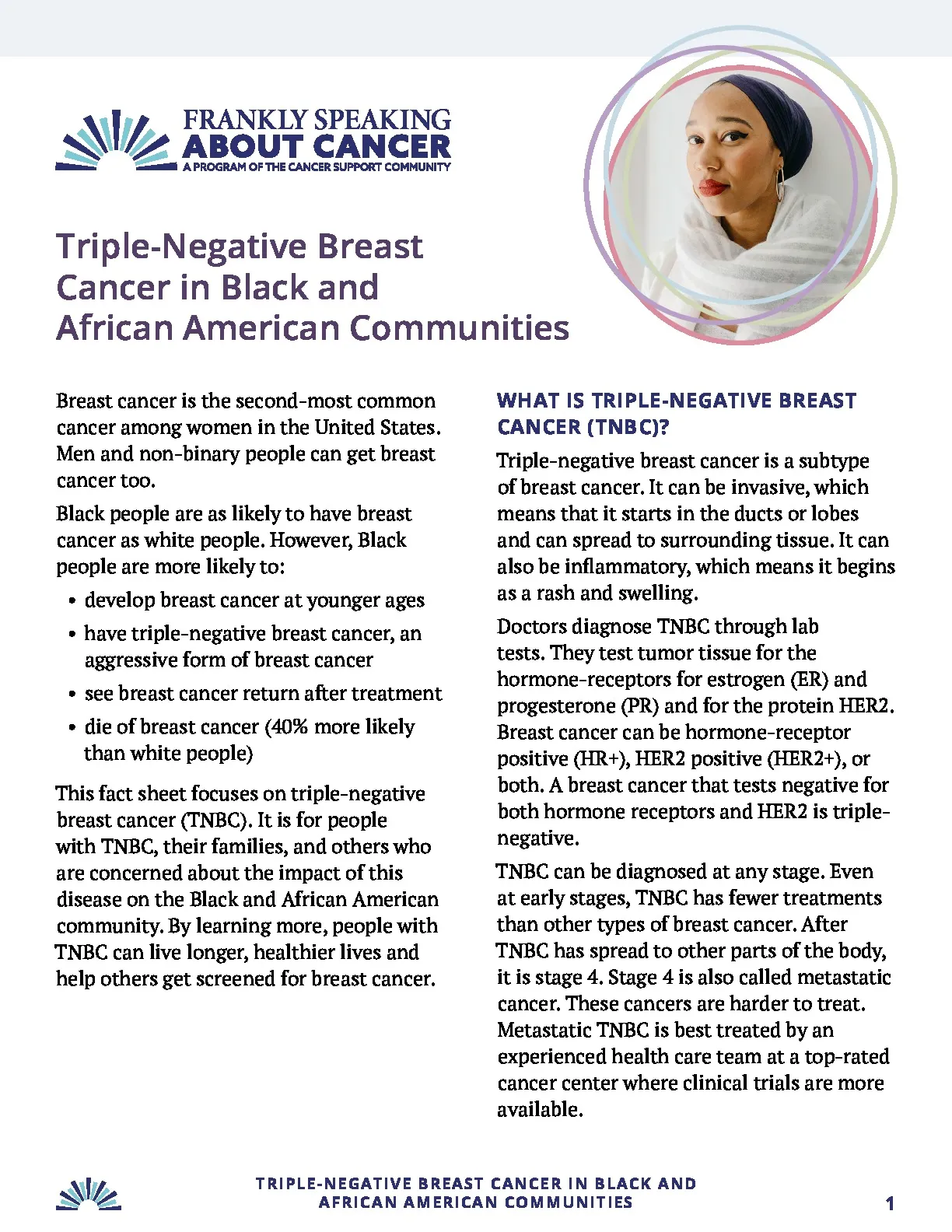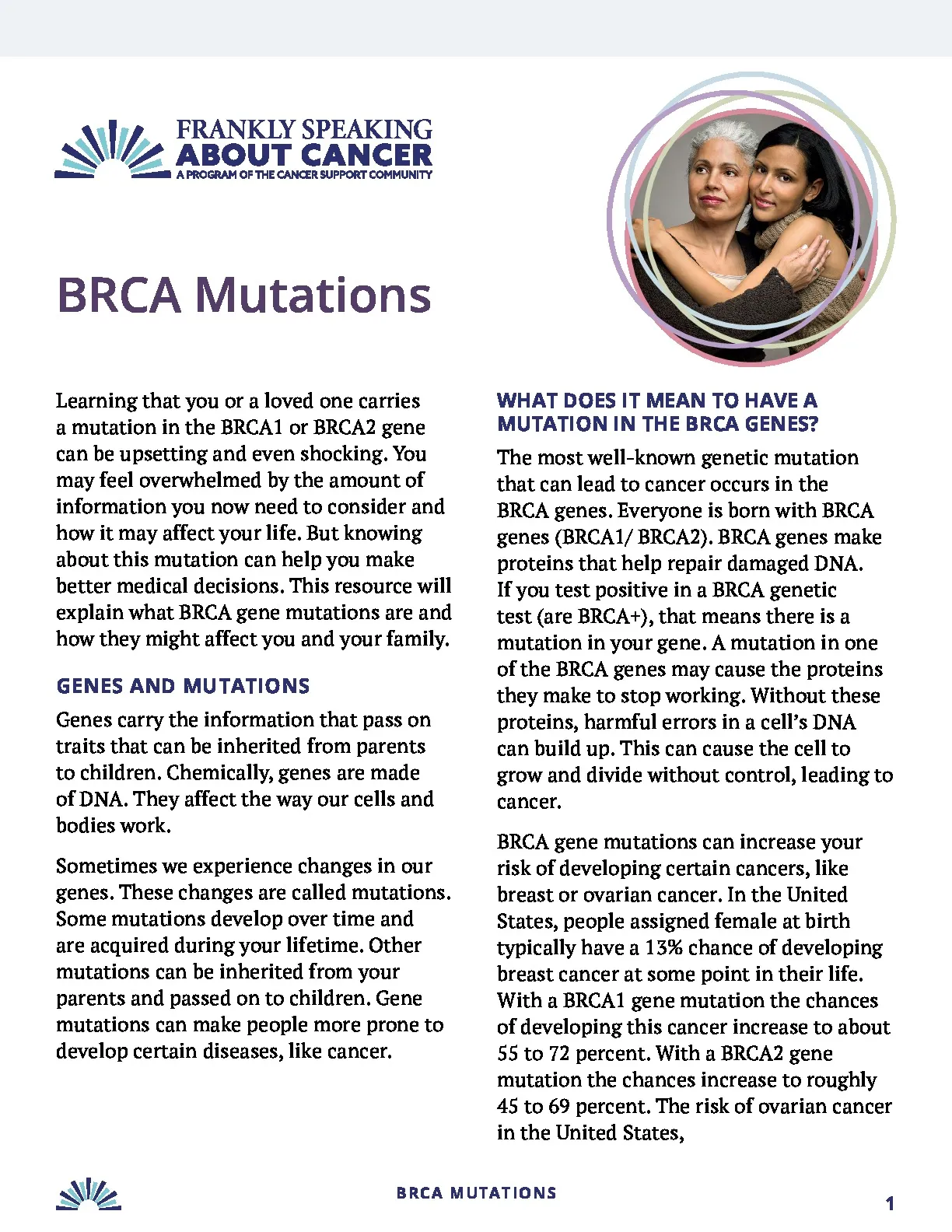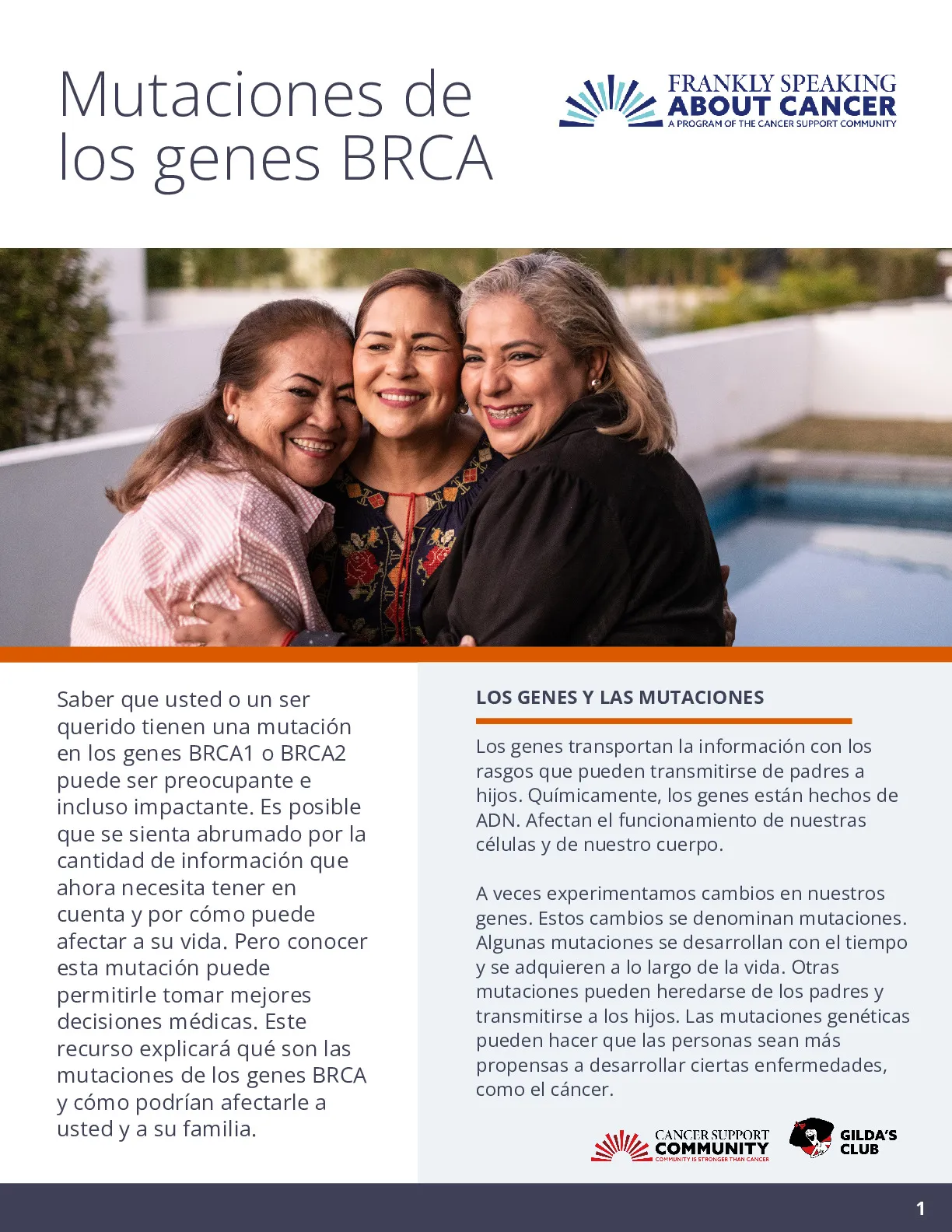Breast Cancer
Table of Contents
Breast cancer occurs when cells in the breast grow out of control. The breast is an organ. It sits on top of the chest muscles and upper ribs. A person can develop breast cancer in one or both breasts. Women, men, and non-binary people can develop breast cancer. Breast cancer can start in different areas of the breast, including:
- Lobules—These are glands in the body that help make breast milk.
- Nipple(s)—The nipple is an opening in the skin of the breast. It is surrounded by the areola. The areola is the area of the breast where the skin is slightly darker in color and thicker.
- Ducts—Ducts are small tubes that help carry breast milk from the lobules to the nipple.
- Stroma—Stroma are fat and connective tissues that help keep the ducts and lobules in place.
- Lymph Vessels—The lymph vessels help carry blood and fluid away from the breast.
Types of Breast Cancer
There are several different types of breast cancer. These types are based on where the cancer started, the type of cells that are changed by the cancer, and the types of genes or proteins the cancer might make.
- Ductal Carcinoma in Situ (DCIS)
- Invasive Ductal Carcinoma
- Invasive Lobular Carcinoma
- Inflammatory Breast Cancer
- Metastatic Breast Cancer
Ductal Carcinoma in Situ (DCIS): DCIS is an early form of breast cancer. DCIS occurs when cancer cells are found in the breast ducts. It is considered non-invasive because the cancer has not spread beyond the wall of the duct. It is also known as Stage 0 breast cancer.
Invasive Ductal Carcinoma: This is the most common type of breast cancer. It forms in the tubes that help carry milk from the breast. The cancer cells have spread beyond the wall of the duct to nearby fatty and connective tissue. If left untreated, this cancer can spread to other organs.
Invasive Lobular Carcinoma: This form of cancer starts in the lobules of the breast. The cancer cells have spread passed the lobules to nearby fatty and connective tissue. If left untreated, the cancer can spread to other organs in the body.
Inflammatory Breast Cancer: This type of breast cancer typically looks like a rash or infection and can lead to swelling. This occurs when the cancer cells spread to lymphatic channels in the skin. This is what causes the cancer to look more like a rash, instead of lumps. This also causes swelling.
Metastatic Breast Cancer: Metastatic breast cancer means that the cancer has spread to other organs in the body. This can include the bone, lungs, liver, or brain. It is also known as advanced (or Stage IV) breast cancer.
- Metastatic breast cancer can begin as a new cancer. If you have breast cancer for the first time and it has already spread, it is called de novo metastatic breast cancer. Metastatic breast cancer can also be the return of a prior breast cancer. This type of cancer can be harder to treat compared to other breast cancers.
Triple-Negative Breast Cancer (TNBC)
TNBC is a subtype of breast cancer. It is considered invasive and an aggressive form of breast cancer. This means that it can start in the ducts or lobules and spread quickly to nearby tissue. TNBC can also be inflammatory. This means it can look like a rash and can lead to swelling.
Doctors diagnose TNBC through lab tests. They test tumor tissue for the hormone receptors, estrogen (ER) and progesterone (PR). They also test for the biomarker HER2. Breast cancers that test negative for both hormone receptors and HER2 are considered “triple-negative”.
This cancer is more common in people who carry the BRCA gene mutation and people who develop breast cancer before age 40. Black and African American persons are at higher risk for developing TNBC. Since it is an aggressive form of cancer, it can be more difficult to treat.

Coping With Triple Negative Breast Cancer?
Learn about 3 key areas where you made need extra support, and resources that can help.
Risk Factors
Risk factors are things that can increase a person’s chance of developing a disease. Research is improving our knowledge of the causes of breast cancer. While most breast cancer cases develop without warning, there are some known factors that can increase a person’s risk:
- Having a family history of cancer or genetic mutations
- Having a personal history of a previous breast cancer
- Having a personal history of non-cancer related diseases within the breasts
- Being older in age
- Having breasts that have a higher tissue density
- Never experiencing childbirth or giving birth at an older age
- Race and ethnicity
Breast Cancer Risk in Black & African American Communities
It is important to talk about the risk and impact of breast cancer in Black and African American communities. White people have a greater risk of developing breast cancer. However, Black and African American persons are more likely to have poorer treatment outcomes and rates of survival. This includes having an increased risk of:
- Developing breast cancer at younger ages
- Developing TNBC, an aggressive form of breast cancer (3 times as likely as white people)
- Seeing breast cancer return after treatment
- Dying of breast cancer (42% more likely than white people)
It is unclear exactly why these differences exist. So, it is important to talk to loved ones the ways they can reduce their risk of developing this cancer. Let your family know who has had cancer, what kind, and how old they were when they had it. If you have genetic testing, share the results even if they are negative. This information can help family members take the needed steps for their health.
What Does the African American Community Need to Know About Triple Negative Breast Cancer?
Ruby, your virtual community navigator, will help explain what members of the Black and African American community need to know about triple negative breast cancer.
Breast Cancer & Genetic Testing
Genetic testing looks for mutations or changes in your genes. If you have been diagnosed with cancer, doctors may recommend you see a genetic counselor to test your genes for an inherited mutation. The genetic counselor will ask detailed questions about who in your family has had cancer and at what age.
The most well-known genetic mutation that can lead to cancer occurs in the BRCA (Breast Cancer) genes. If you test positive in a BRCA genetic test (are BRCA+), that means there is a mutation in your gene. BRCA gene mutations can greatly increase your risk of developing certain cancers, like breast or ovarian cancer. Still, not every person who has a BRCA gene mutation will develop cancer. Be sure to discuss your test results with a genetic counselor or medical oncologist. Share any results with your family as well. Having this information not only impacts your own cancer risk, but that of your family members too.
Signs & Symptoms
The most common symptom for breast cancer is finding a lump in the breast or armpit area. Below are some other signs of breast cancer to look out for. If you experience any of these symptoms let your doctor know right away so they can perform more testing:
- Swelling along with a lump in the breast
- Swelling in the armpit area (lymph nodes)
- Nipple discharge (occurs at random and from one side only)
- Pain in the nipple
- Inverted nipple
- Skin changes (scaly or pitted skin) on the nipple
- Unusual breast pain or discomfort
Screening
There are many ways to detect or screen for breast cancer. Regular screening is the best way to catch breast cancer early, when it is easiest to treat. Some common ways to screen for breast cancer, include:
Breast Self-Exam - A monthly breast self-exam will help you notice changes to your breasts’ texture, size, and skin condition. People who do breast self-exams know how their breasts normally look and feel and can see changes sooner. Do not hesitate to talk to a doctor or nurse if you have a question or concerns about your breasts. Talk with them about how to perform a self-exam if you are unsure.
Clinical Breast Exam - During this process, a doctor will check the breasts, underarms, and collarbone area. A clinical breast exam should be a part of a regular visit to a gynecologist or a primary care doctor.
Screening Mammogram - A mammogram is a breast x-ray that shows if there are any lumps or anything unusual in the area. A mammogram can show a breast lump before it can be felt. Talk to your doctor to find out when is the best time to have a mammogram and how often.
Breast Ultrasound: A breast ultrasound uses sound waves to create images of the inside of your breasts. With this, a doctor can look for any problem areas and check to see how well blood is flowing. If you have dense breast tissue, your doctor may also perform an ultrasound in addition to other tests. This is because a mammogram may not be able to see through the tissue.
Breast MRI: An MRI uses radio waves and a powerful magnet linked to a computer to create detailed pictures of the breast. MRIs are often used to screen high-risk women. They also help gather more information about anything unusual seen during a mammogram.

Diagnosis & Testing
Breast cancer is found through routine screening or after symptoms appear. If your doctor suspects breast cancer, they will want to perform additional diagnostic tests, such as:
- Diagnostic Mammogram - Like screening mammograms, diagnostic mammograms are x-rays of the breast. A diagnostic mammogram is often done after a screening mammogram. The physician may use different methods to get more detailed images of the breast. This will help them learn more about anything unusual or lumps in the breast.
- Ultrasound - This scan can show whether a lump is solid or filled with fluid. Lumps that are filled with fluid are called cysts. Cysts usually do not lead to cancer. Any solid lumps or masses may lead to cancer.
- MRI - An MRI can show the difference between healthy and unhealthy tissue. Because MRIs do not expose a person to radiation, it may be used to examine a breast lump found during pregnancy.
- Biopsy - A physician will look at a sample of breast tissue under a microscope to check for cancer cells. If cancer cells are found, the physician will study them to learn as much as possible about the type of cancer. This may include testing the cancer cells for biomarkers.
Biomarker Testing
If cancer cells are found during the biopsy, the doctor may run more tests. This is called biomarker testing. Biomarker testing looks for biomarkers in your cancer sample. A biomarker is a sign of disease or abnormal function that can be measured in your blood, tissue, or bodily fluid. Biomarkers are often referred to by a 3 or 4 letter abbreviation.
In cancer, biomarkers are often used to help choose the best treatment for you. These biomarkers can be proteins, genes, or gene mutations. Biomarkers can tell your doctor about the subtype of the cancer and if there is a chance that the cancer may return (cancer recurrence). Your doctors may test your breast cancer cells for the following to help choose the best treatment option for you. This is not a complete list. Your doctors may recommend testing for other biomarkers as well:
- BRCA Gene Mutations: Even if your genetic tests show you did not inherit a BRCA1 or BRCA2 mutation, your cancer cells may contain or develop one over time. This is called a somatic mutation.
- HR+ and HR-: Breast cancer cells are tested for hormone receptors (HR). A physician may say that the cancer cells are HR+ (positive) or HR- (negative). Knowing this will be helpful when deciding which treatment option may work best.
- ER+ and PR+: When breast cancer cells are tested for hormone receptors, the physician will look for estrogen receptors (ER) and progesterone receptors (PR). If the cancer cells have more of these receptors than a healthy cell, then the breast cancer will be listed as ER+ (positive) or PR+ (positive). Your doctor may recommend treatments to stop the specific hormone from working.
- HER2+: HER2 is a type of biomarker. HER2 receptors control cell growth. Some breast cancer cells can have too many HER2 receptors. These are called “HER2+ (positive) cancers”. HER2+ cancers can be more aggressive. This means they are more likely to grow and spread quickly.
- HER2-Low: Some breast cancer tumors may have low levels of HER2 receptors. These are called “HER2-low breast cancers”. Some people with advanced stage HER2-low breast cancers, may be able to receive HER2+ treatments. This is possible even if the person originally tested negative for the HER2 biomarker.
- Triple Negative: Triple negative breast cancers test negative for extra estrogen, progesterone, and HER2 receptors.
Treatment & Side Effects
One of the many decisions you will make about your cancer treatment is choosing a healthcare team. They should have the expertise and personal touch to make you feel comfortable and respected. It is critical to trust the people who are treating you and to be able to communicate with them.
You have the right to a second, and even third, opinion at any point in your cancer experience. This can help you confirm your diagnosis, understand treatment options, learn about clinical trials, and help you choose the right health care team.
Treatment for breast cancer will depend on the stage, location, and characteristics of the cancer. It also depends on your general health and your preferences and personal goals. The type of breast cancer you have will also impact your treatment options. Treatments that work for one subtype of cancer may not work for others. TNBC and metastatic breast cancer are harder to treat. They have fewer treatment options that will work compared to other types of breast cancer. Because of this, metastatic breast cancer and TNBC are often best treated by an experienced healthcare team.
Here are some of the most common methods to treat breast cancer:
Surgery: Surgery can be an important part of treatment for early-stage breast cancers. As with other types of surgery, side effects include pain or discomfort, risk of infection and some mobility restrictions right after surgery. There are two main types of surgery:
- Breast-conserving surgery: removes the cancer and some of the surrounding tissue. It is also known as a lumpectomy, quadrantectomy, partial mastectomy, or segmental mastectomy. During this procedure, only part of the breast and tissue is removed. How much breast tissue is removed will depend on the location and size of the tumor.
- Mastectomy: a type of surgery that removes the entire breast. All of the breast tissue and sometimes the lymph nodes are removed. Typically, most of the skin of the breast can be saved. Sometimes the nipple can be saved as well. This is called a nipplesparing mastectomy. Some people may have both breasts removed as a form of treatment. This is called a double mastectomy. The specific type of mastectomy needed will depend on several different factors. Be sure to talk with your doctor about these factors and what surgery may be right for you.
Chemotherapy (also called chemo) uses drugs to destroy or damage fast-growing cells like cancer cells. It is used to shrink tumors, slow cancer’s growth, relieve symptoms, or help people live longer. Chemotherapy given after surgery is called “adjuvant” treatment. Chemotherapy given before surgery is called “neoadjuvant” treatment.
Hormone therapy: Some cancer cells use hormones made by the body to grow. Hormone therapy can help stop or slow the spread of these cells. Some therapies stop the body from making these specific hormones. Other therapies may change how the body’s hormones act. Some hormones, like estrogen, can fuel breast cancer growth. Because of this, doctors use drugs that block estrogen from being created. They also use drugs that stop the hormone from functioning.
Radiation therapy: Radiation therapy is the use of high-energy rays to kill or damage cancer cells. The goal is to damage as many cancer cells as possible without harming healthy tissue. To lessen damage, doses are very precise, and treatment is often spaced out. For breast cancer, most people receive some form of radiation therapy after surgery. This is especially true for people who undergo breast conservation surgery. Radiation therapy given after the surgical procedure is called “adjuvant” radiation therapy.
Targeted therapy: Targeted therapy uses drugs to target specific changes in cancer cells that help them grow, divide, and spread. Targeted therapy drugs are designed to be more precise. They fight cancer cells while causing less harm to other cells in the body.
Clinical trials: Be sure to ask about clinical trials. Clinical trials are research studies to test new treatments or learn how to use existing treatments better. They find new and better ways to prevent or treat cancer.

Breast Reconstruction
Some women with breast cancer have treatment that includes removal of one or both breasts. These procedures are referred to as a mastectomy or a double mastectomy. In addition, some women who are at high risk of developing breast cancer choose to reduce their risk by having a preventive (prophylactic) double mastectomy.
Physical Effects of Treatment
Breast cancer surgery can lead to some longer-term physical changes. You may experience chronic pain and even decreased strength or mobility. Some other physical side effects may include:
- Lymphedema: Lymphedema describes swelling in parts of the body caused by fluid buildup.
- Axillary web syndrome (AWS): AWS may occur if you have surgery that involves your lymph nodes. It is also known as ‘cording’. If you develop AWS, you may see and/or feel a web of thick, ropelike structures under the skin of your inner arm on the side of the operated breast.
- Phantom breast syndrome (PBS). PBS occurs when people feel sensations in the area where a breast was removed. This is usually caused by remaining pieces of breast tissue after surgery. These sensations can include pain and discomfort, itching, tingling, and even pressure in the area.
Talk to your doctor if you experience any of these or other new physical changes. They will be able to provide specific medications, therapies, and recommend lifestyle changes to help. Seeing a specialized physical therapist can also be helpful to prevent or treat symptoms like lymphedema and AWS.
Managing Treatment Side Effects
It helps to learn about the side effects of treatment before you begin so you will know what to expect. When you know more, you can work with your health care team to manage your quality of life during and after treatment. Managing symptoms and side effects can not only make you feel better physically but emotionally as well. Be sure to talk with your doctor about any possible side effects that may arise with each treatment option you consider.
Seeing a palliative care specialist can help address many side effects that may arise during treatment. Palliative care is different from hospice care and end-of-life care. It is available to you at any point of your treatment experience. Palliative care or supportive care can help you maintain your best possible quality of life. It can help you with physical, social, emotional, or spiritual concerns.
Coping With Breast Cancer
It is important to take care of yourself as you navigate life after a breast cancer diagnosis. Managing both the emotional and physical impact of cancer can lead to a lot of stress. Some ways to take care of your mental health include:
- Do the things you enjoy: Finding things to look forward to, no matter how small, can be helpful and bring a sense of joy.
- Stay connected to others: It is important to share your feelings with people you are comfortable with. Talking with a counselor or therapist can help you cope with distress, anxiety, and depression as well.
- Take care of your overall health: Try to eat regularly and get enough sleep. Try to stay physically active once your doctor says it is safe to do so. Limit any use of substances, like smoking and alcohol. Try not to judge yourself harshly if these changes don’t happen right away.
Body Image & Feeling of Loss
You are not alone if you have concerns about your body image. Surgery and other cancer treatments can change how a person views their own body. You may also mourn the loss of your breast and its function. This may be the loss of feeling in the breast or losing the ability to breastfeed after surgery.
When coping with changes to your body image:
- Take time to mourn your losses. Know that it is OK to feel sad, angry, and frustrated. Your feelings are real, and you have a right to grieve. Many people may need an adjustment period and more time to get used to their new appearance.
- Try to focus on the ways that coping with cancer has made you stronger and wiser. Look for new ways to love your appearance.
- Build connections and community with other survivors. Doing so can provide comfort, advice, and new ways to cope with this change.
Intimacy & Sexual Health
How you feel about and perceive your body can impact your feelings around sex and intimacy as well. Changes to perceived body image can make intimacy tricky for all involved. The first step to intimacy during and after any treatment is patience and understanding.
Be sure to:
- Talk openly and honestly with your partner about intimacy and how you are feeling.
- Talk with a specialist if you need more support around this aspect of your life. If you undergo surgery, talk to your care team about being intimate after the procedure. Let your doctor know if you experience any pain or discomfort.
- Talk with other breast cancer survivors. Having support and guidance from people going through similar experiences can help as you navigate these new challenges.
Partners should allow time for those undergoing treatment to mourn any loss of physical confidence and changes to their body image. Openness and trust can ensure a healthy, comfortable, and intimate connection. Offer acceptance and encouragement as your loved one makes changes to transition from a pre-cancer to a post-cancer body.
Finding Support
It helps to have support, both during and after cancer treatment. Talking with people who understand your experience can help you cope and feel in control. There are many places to turn to for practical and emotional support, including:
- Health care team: Your healthcare team may be able to connect you to a patient or nurse navigator. These specialists can be a key resource during your treatment journey and recovery.
- Psychologist, therapist, or mental health counselor: These professionals are specially trained to support people and their emotional, behavioral, and social concerns.
- Spiritual/ Faith leader in the community: This person can provide religious or spiritual support.
- Support groups or peer mentors: Talking with others who have experienced similar stressors can help you better understand and express what you are feeling. Your care team may be able to recommend online or in-person support groups.
- Local or national patient advocacy groups: Look for groups that work with people diagnosed with breast cancer. They can provide a variety of support and resources throughout your experience.
Frankly Speaking About Cancer Library
LibraryWould you like a print copy of these educational materials?
We can mail our Frankly Speaking About Cancer pieces to you. Shipping is free for up to 20 pounds.
Your Experience Matters
Help improve outcomes for breast cancer patients & caregivers. Join the Cancer Experience Registry.
